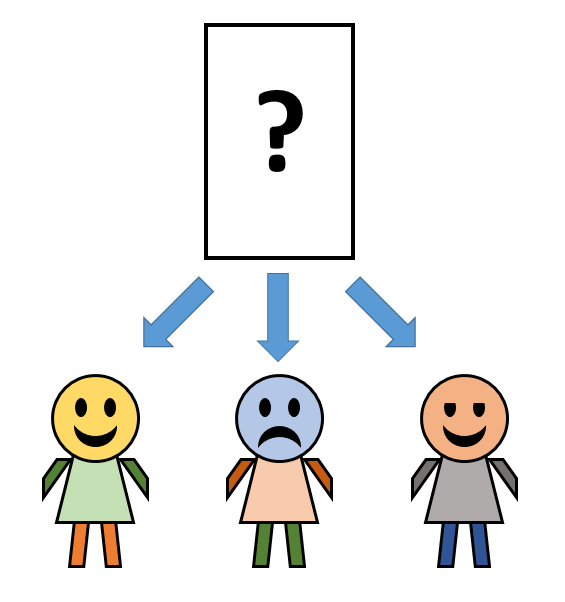Collect All The Toys
Each sealed Storelings pack contains a single Storeling toy chosen at random. There are 3 distinct Storelings toys in the set, and each toy has an equal chance to be in each pack. Also, each pack is independent of every other pack.

What is the expected value of the number of packs one would need to open in order to obtain at least one copy of each toy?
The answer is 5.5.
This section requires Javascript.
You are seeing this because something didn't load right. We suggest you, (a) try
refreshing the page, (b) enabling javascript if it is disabled on your browser and,
finally, (c)
loading the
non-javascript version of this page
. We're sorry about the hassle.
4 solutions
Moderator note:
Good explanation using the linearity of expectation.
My answer to this question was 6. The logic behind that being that you can't just open "half of a pack". You would have to round up to the next integer.
Log in to reply
Expected value does not have to be an integer, even if the variable is an integer. Expected value is a weighted mean of all the possible number of packs one could open. In this case, the weighted mean is between 5 and 6 packs.
The expected value of a fair 6-sided die roll is 3.5. You cannot roll a 3.5 on a die, but the long-run average of die rolls is 3.5.
Which is why this is the expected value which is the theoretical mean value. It does not have to be an integer. Like rolling a fair six-sided die. The expected value is 3 . 5 .
If the value is 6 , then it wouldn't be the expected value. It is just one of the possible outcomes. Do note that 5 . 5 is not the guaranteed number of packs opened.
Instead of focusing on the expected value for obtaining all the toys, focus on the expected value for obtaining a new toy.
The expected value for obtaining the first toy is obviously 1 , since any toy hasn't been collected yet.
The probability that you can obtain a new toy then becomes 3 2 , so the expected value for obtaining the second toy is then the reciprocal of this, 2 3 .
Doing the same as the second step, the expected value for the third toy then becomes 3 .
Therefore our answer is 1 + 2 3 + 3 = 5 . 5 .
This is an example of the coupon collector's problem , where the answer is given by:
E ( 3 ) = 3 ∗ ( 1 / 1 + 1 / 2 + 1 / 3 ) = 5 . 5
Let A be the expected value of packs that need to be opened in order to get three unique Storelings, B as A given that one unique Storeling has already been obtained, and C as A given that two unique Storelings have already been obtained.
A = 1 + B + C
B = 3 1 ∗ ( 1 + B ) + 3 2 ∗ ( 1 )
C = 3 2 ∗ ( 1 + C ) + 3 1 ∗ ( 1 )
Solving for A via substitution, we get A = 5 . 5
Relevant wiki: Expected Value - Problem Solving
Based on the information given in the problem, there are 3 toys that need to be collected. Let them be called A , B , and C . Each has an equal chance of being opened from a pack, so the probability to obtain a specific toy from a pack is 3 1 .
Let X represent the number of packs opened to obtain a full collection. Let X n represent the number of packs opened to obtain the n th distinct toy in the collection. By linearity of expectation , E [ X ] = E [ X 1 ] + E [ X 2 ] + E [ X 3 ] .
When the 1 st pack is opened, it will either be A , B , or C . Regardless of which toy it is, it will be new to the collection. Therefore, E [ X 1 ] = 1
After the 1 st toy is obtained, it is not guaranteed that a new toy will be in the next pack. There is now a 3 2 probability that the next pack will contain a toy new to the collection. By the expected value of the geometric distribution , the expected number of packs to obtain the next new toy is the reciprocal of this probability, E [ X 2 ] = 2 3 = 1 . 5 .
After the 2 nd toy is obtained, there is now a 3 1 probability to open the final toy for each pack opened. Once again by the expected value of the geometric distribution, the expected number of packs to obtain the final toy is the reciprocal of this probability, E [ X 3 ] = 3 .
The expected number of packs needed is the sum of these expectations, E [ X ] = 1 + 1 . 5 + 3 = 5 . 5 .